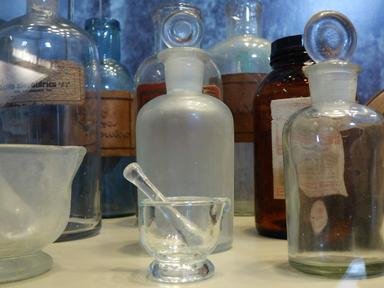Quiz Answer Key and Fun Facts
1. In what decade was uranium first discovered?
2. Which of the following is not a gas at normal temperatures and pressures?
3. Which gaseous element was first isolated in 1886 by Henri Moissan?
4. What was the first element definitely known to have been discovered at a particular time and place by a named individual?
5. On an island near Stockholm in Sweden is -------, a quarry that gave its name to no fewer than four metallic elements.
6. Out of all the 92 naturally-occurring, elements, only a few derive their names from those of people other than Marie Curie (and even then, not directly). Which of these is one of them?
7. Originally called eka-silicon, which important semi-conducting element was discovered in 1886 by Clemens Winkler.
8. What non-metallic element named for an ancient Greek deity found extensive use in photocopying machines?
9. Which metallic element is named for the village near Fort William in western Scotland where its principal ore was first discovered?
10. Which metallic element, no 51 on the periodic table, has the unusual property of expanding as it cools, making it ideal for alloys used for casting printers' type and other finely-detailed items?
Source: Author
Cibator
This quiz was reviewed by FunTrivia editor
crisw before going online.
Any errors found in FunTrivia content are routinely corrected through our feedback system.
